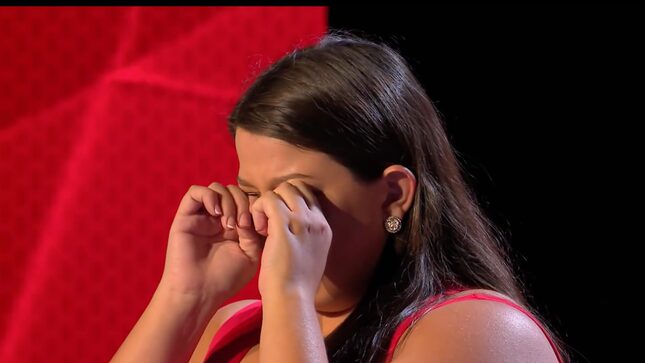The Biggest Loser Isn't About Wellness, It's About the Spectacle of Fat People's Pain and Tears
EntertainmentTV

The Biggest Loser is back. But it’s been given a makeover from its origins in the openly, cheerfully exploitative reality TV environment of the early 2000s. Now it’s about wellness, about lifestyle changes. Or at least, that’s what the producers want you to think, even as the show retains all its original premises. They can wrap this reboot in all the wellness language they want, but it’s the same old shit.
Relocated to USA Network and with the original host, Jillian Michaels, jettisoned for Bob Harper’s distinctly youth-pastor energy, the Biggest Loser proclaims itself to be about more than stunts and extremes now. Upon arrival at the training complex in Tuesday night’s premiere, the contestants were greeted by Harper, who somberly quoted the national obesity rate and announced, “You are all here to lose weight, but it’s more important to me that you all get healthy.”
Harper added, “Your time here will be focused on three things: mind, fitness, and fuel. It’s how you think, it’s how you move, and how you eat. If you can get those three things right, I promise you, you will win your life back.” Fat people don’t have lives, of course.
The Biggest Loser is an amazing illustration of how, instead of arranging society in a way that would actually allow people to live better and healthier—shorter workdays in better conditions, freely available and easily accessible preventative healthcare (including mental healthcare), neighborhoods built for walking—America treats fat bodies as grotesque or tragic failures and exploits them for entertainment. It’s not surprising to me that people apply for The Biggest Loser. Where else are you going to get the time and space and resources to devote a bunch of time to education and exercising, which is an unmitigated, unqualified good without ever even bringing weight into the conversation? Gyms cost money. Exercise takes time, and time for many people is a luxury. A woman named Kristi wiped a tear away and explained that she was 20 pounds heavier than when she’d given birth—15 months prior. It’s not like anything about the way America arranges new motherhood leaves much time for jogging.
The reboot of The Biggest Loser is insistent that it has fixed its failures and now it’s actually about wellness and “making a lifestyle change.” They’ve assured critics that they are now dedicated to “aftercare” and helping contestants after they leave the show. And yet it’s still a reality TV show competition where people are rewarded for simply shedding pounds the fastest. The narrative tension revolves around the weigh-in room, which looks like a giant discotheque, which will be “the site of your proudest victories and greatest disappointments,” Harper promised the contestants. Each of the contestants stepped on the scale either shirtless or wearing an exercise bra, entering their near-naked bodies as evidence while the number registered huge behind them, Harper reading it off like a court official rattling off charges against a defendant.
Tears are the money shot ON this show.
“It’s hard standing up in a room with your shirt off, isn’t it?” Harper asked a man named Micah. “It’s one of my biggest fears, just because I hate the way my body looks,” Micah replied. Grace is extended to fat people on this show on very, very specific terms: Only if they are willing to face that their bodies are bad and wrong and are ready to “turn their life around.”
Instead of wellness, the heart of this show is fat people breaking down and crying, typically in front of the conventionally attractive personal trainers in whom the show invests all its moral authority. Each of the contestants is expected to put their pain on display as a backstory for why they’re fat and why they want to change their lives.
Phi spoke about her father’s murder when she was a child and how she felt guilty and began eating to cope with her feelings; Micah explained that his mother had a drug problem that left him feeling insecure and unimportant. Katarina started crying while introducing herself as “the fat nurse” on the cardiac floor where she works, assuming that her body undermines her authority with patients. The show is still a parade of fat people’s tears. Well, and former fat people’s tears—Erica Lugo, one of the trainers, has her own story of slimming down, which is also delivered in a choked-up voice. Tears are the money shot on this show. But don’t worry, vomit gets its moment, too, with at least two shots of contestants hurling into buckets during the initial training sessions.
The Biggest Loser wants to portray itself as focusing on the mental aspect, including scenes where everyone gathers around in a room and talks about their feelings—while Harper reads off their stats, saying things like, “Your body fat percentage is so high, that you have a 90 percent chance of dying of obesity-related complication.” Another opportunity to film fat people crying, of course, but the show also seems to conflate weight loss with therapy, as though an exercise routine were enough to unpack genuine trauma. As though the important part about somebody’s pain is that it might make them fat.
“I want to change the way people think of others who struggle with their weight,” Lugo said. “Lazy, fat, gross—I know those words were thought about me at one point. These people are none of those words.” But the notion of fatness as repulsive is very much the bones of this show. It’s called THE BIGGEST LOSER.